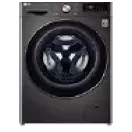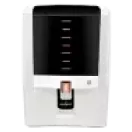When comparing the MediaTek Dimensity 1080 and Samsung Exynos 1380, it is important to understand how each processor performs based on user needs. Both are popular mid-range chipsets that support 5G and offer smooth performance, but their core strengths are slightly different.
The MediaTek Dimensity 1080 is built using 6nm process technology. It focuses on delivering high performance, especially for gaming and multitasking. This processor comes with an octa-core CPU, including two ARM Cortex-A78 cores running at up to 2.6GHz. These powerful cores help handle demanding apps and games smoothly. The Dimensity 1080 also has a Mali-G68 GPU, which enhances the graphics experience. This makes it a good choice for users who enjoy gaming, watching HD videos, or using photo and video editing apps. Additionally, the chipset supports advanced AI features, which helps improve camera performance, voice recognition, and more.
On the other hand, the Samsung Exynos 1380 is manufactured using a more advanced 5nm process, which allows better power efficiency. It also has an octa-core CPU, including four high-performance Cortex-A78 cores and four Cortex-A55 cores for everyday tasks. The Exynos 1380 is equipped with a Mali-G68 MP5 GPU, which can handle most graphics needs with ease. While it may not match the Dimensity 1080 in raw gaming power, it provides a good balance between performance and battery life. It also includes an integrated 5G modem, enabling faster download and upload speeds.
In summary, the Dimensity 1080 is ideal for users who want strong gaming and performance features, while the Exynos 1380 suits those who prefer balanced performance with longer battery life and reliable connectivity.
For further insights on Snapdragon processor phones and MediaTek processor phones, explore our detailed guides. Do not forget to check the latest offers on smartphones and save big on your next purchase.
Technical specifications - MediaTek Dimensity 1080 vs Samsung Exynos 1380
The MediaTek Dimensity 1080 vs Samsung Exynos 1380 comparison highlights differences in performance, power efficiency, and 5G capabilities. While both processors support mid-range smartphones, the Dimensity 1080 focuses on battery efficiency, whereas the Exynos 1380 offers improved AI and imaging features.
General
Understanding the general specifications of the MediaTek Dimensity 1080 and Samsung Exynos 1380 helps clarify their positioning in the market. Both chipsets were introduced in the second half of 2022 and serve different user needs. The Dimensity 1080 is designed for upper mid-range smartphones, while the Exynos 1380 targets devices focused on efficiency and balanced performance. Each processor carries a distinct model number and reflects the strengths of its respective brand, MediaTek and Samsung, in mobile chipset innovation.
| Specifications |
MediaTek Dimensity 1080 |
Samsung Exynos 1380 |
| Announced Date |
11 October 2022 |
23 February 2023 |
| Class |
High Performance |
Balanced Performance |
| Model number |
MT6877V |
Exynos 1380 |
| Brand |
MediaTek |
Samsung |
Also check: Slim and lightweight mobiles
CPU
The CPU architecture plays a vital role in the overall efficiency and speed of a processor. The MediaTek Dimensity 1080 is built on a 6nm process, offering solid performance for demanding tasks while maintaining reasonable power efficiency. In contrast, the Samsung Exynos 1380 uses a smaller 5nm process, which typically improves energy efficiency and thermal management. Both chipsets are designed to handle multitasking, gaming, and day-to-day applications effectively, catering to users who value balanced performance in mid-range smartphones.
| Specifications |
MediaTek Dimensity 1080 |
Samsung Exynos 1380 |
| Architecture |
2x 2.6 GHz – Cortex-A78
6x 2 GHz – Cortex-A55
|
4x 2.4 GHz – Cortex-A78
4x 2 GHz – Cortex-A55
|
| Cores |
8 |
8 |
| Frequency |
Up to 2.6GHz |
Up to 2.4GHz |
| Instruction set |
ARMv8.2-A |
ARMv8.2-A |
| Process |
TSMC N6 (6nm) |
Samsung 5LPE (5nm) |
| TDP (Sustained power limit) |
5W |
4W |
| Manufacturing |
TSMC |
Samsung |
Also check: Qualcomm Snapdragon processor phones
Graphics
The graphical capabilities of a processor directly influence gaming quality and multimedia performance. The MediaTek Dimensity 1080 is equipped with a Mali-G68 MC4 GPU, which supports enhanced visuals and smooth gameplay, making it ideal for users who engage in graphic-intensive tasks. Meanwhile, the Samsung Exynos 1380 features the Mali-G68 MP5 GPU, offering balanced graphical performance suited for everyday use, video playback, and casual gaming. Both GPUs support advanced APIs, ensuring a seamless experience across various applications.
| Specifications |
MediaTek Dimensity 1080 |
Samsung Exynos 1380 |
| SoC |
MT6877V |
Exynos 1380 |
| GPU name |
Mali-G68 MC4 |
Mali-G68 MP5 |
| Architecture |
Valhall 2nd gen |
Valhall 2nd gen |
| GPU frequency |
950 MHz |
949 MHz |
| Execution units |
4 |
5 |
| Shading units |
32 |
32 |
| Total shaders |
128 |
160 |
| FLOPS |
940 GFLOPS |
303.7 GFLOPS |
| Vulkan version |
1.3 |
1.3 |
| OpenCL version |
2.0 |
2.0 |
| DirectX version |
12.0 |
12.0 |
Also check: Notch display phones
Memory
The type and size of memory used in a processor affect how quickly and smoothly it runs tasks. The MediaTek Dimensity 1080 supports LPDDR4x RAM, which offers good speed and efficiency for daily use. In comparison, the Samsung Exynos 1380 supports LPDDR5 RAM, which is faster and more advanced. This means it can handle tasks more quickly and efficiently, especially when multitasking or running demanding apps. The better memory support gives the Exynos 1380 an edge in performance.
| Specifications |
MediaTek Dimensity 1080 |
Samsung Exynos 1380 |
| Memory type |
LPDDR5x |
LPDDR5 |
| Memory frequency |
3200 MHz |
3200 MHz |
| Bus |
4 x 16-bit |
2 x 16-bit |
| Max bandwidth |
51.2GB/s |
25.6GB/s |
| Max size |
16GB |
8GB |
Multimedia (ISP)
Multimedia features help a phone show better pictures and videos. Both the MediaTek Dimensity 1080 and Samsung Exynos 1380 support high-quality screens and powerful cameras. They can handle high-resolution photos, smooth video playback, and clear video calls. This makes them good choices for users who enjoy watching videos, taking photos, or using social media apps with rich visuals.
| Specifications |
MediaTek Dimensity 1080 |
Samsung Exynos 1380 |
| Storage type |
UFS 3.1 |
UFS 3.1 |
| Max display resolution |
2520 x 1080 |
2960 x 1440 |
| Max camera resolution |
200MP |
200MP |
| Video capture |
4K @ 30fps |
4K @ 30fps |
| Video playback |
4K @ 30fps |
4K @ 60fps |
| Video codecs |
H.264, H.265/HEVC, VP9 |
H.264, H.265/HEVC, VP8, VP9 |
| Audio codecs |
- AAC
- AIFF
- CAF
- MP3
- MP4
- WAV |
- AAC
- AIFF
- CAF
- MP3
- MP4
- WAV
|
Connectivity and network
Connectivity is important for using the internet, apps, and making calls. Both the MediaTek Dimensity 1080 and Samsung Exynos 1380 support 5G, Wi-Fi, and Bluetooth. These features help the phone connect quickly to the internet, share files, and stream videos smoothly. They also make sure calls and messages work well without delays.
| Specifications |
MediaTek Dimensity 1080 |
Samsung Exynos 1380 |
| Modem |
5G |
5G |
| 4G support |
Yes |
Yes |
| 5G support |
Yes |
Yes |
| Download speed |
Up to 2.7GB/s |
Up to 3.79GB/s |
| Upload speed |
Up to 1.2GB/s Gbps |
Up to 1.28GB/s |
| Wi-Fi |
Wi-Fi 6 |
Wi-Fi 6 |
| Bluetooth |
5.2 |
5.3 |
| Navigation |
GPS, Glonass, Beidou, Galileo, QZSS, NAVIC |
GPS, Glonass, Beidou, Galileo |
Also check: Upcoming 5G mobile phones
Benchmark comparison: MediaTek Dimensity 1080 vs Samsung Exynos 1380
Benchmark scores offer a measurable way to assess a processor’s performance across multiple tasks. They help users understand how a chipset handles gaming, multitasking, and everyday usage. In this comparison, the MediaTek Dimensity 1080 and Samsung Exynos 1380 are evaluated using AnTuTu 10, GeekBench 6, and 3DMark. These benchmarks highlight key differences in CPU and GPU performance, offering a clearer view of how each processor performs under real-world conditions.
AnTuTu 10
AnTuTu 10 measures performance across key areas such as CPU, GPU, memory, and user experience. The MediaTek Dimensity 1080 and Samsung Exynos 1380 score differently in each category, reflecting their unique strengths. These variations impact overall speed, multitasking efficiency, and performance in gaming and everyday smartphone tasks.
| Components |
MediaTek Dimensity 1080 |
Samsung Exynos 1380 |
| CPU |
158,000 |
145,000 |
| GPU |
238,000 |
220,000 |
| Memory |
114,000 |
110,000 |
| UX |
82,000 |
78,000 |
| Total score |
592,000 |
553,000 |
GeekBench 6
GeekBench 6 tests processor performance through a variety of tasks, including asset compression, HTML5 browsing, PDF rendering, and background processing. By comparing the MediaTek Dimensity 1080 and Samsung Exynos 1380 across these components, users can gauge their real-world efficiency. This helps determine how well each chipset manages diverse workloads in everyday use.
| Components |
MediaTek Dimensity 1080 |
Samsung Exynos 1380 |
| Asset compression |
1,200 |
1,100 |
| HTML 5 browse |
1,100 |
1,050 |
| PDF render |
950 |
920 |
| Image detection |
1,300 |
1,250 |
| HDR |
1,000 |
980 |
| Background blur |
1,150 |
1,100 |
| Photo processing |
1,200 |
1,180 |
| Ray tracing |
950 |
920 |
3DMark
3DMark checks how good a processor is at handling graphics. It tests things like how smoothly games run, how stable the graphics are, and the overall graphics power. When comparing the MediaTek Dimensity 1080 and Samsung Exynos 1380, 3DMark results show which one gives better visuals for gaming and watching videos.
| Components |
MediaTek Dimensity 1080 |
Samsung Exynos 1380 |
| Stability |
97% |
95% |
| Graphics test |
9,500 |
9,000 |
| Score |
4,200 |
4,000 |
Explore MediaTek mobiles on the lowest EMI from Bajaj Finserv
Bajaj Mall is the best online destination for you to read about all the details, features, and specs of the MediaTek mobiles. Once you have gathered all the information you want, head to the nearest Bajaj Finserv partner store and select the MediaTek mobiles you want. You can get a pre-approved loan to fund your purchase. You can check your pre-approved loan limit online or at the store. After that, provide your basic details, and convert the cost of your purchase into Easy EMIs.
Advantages of shopping using the Bajaj Finserv Insta EMI Card
- Competitive prices: Bajaj Finserv partner stores offer unbeatable prices, making sure that your purchase fits your budget effortlessly.
- Easy EMIs: With Bajaj Finserv’s financing options, you can easily afford your selected product. Enjoy the freedom to choose a repayment tenure that aligns with your financial comfort.
- No upfront payment: Enjoy the convenience of no initial lump sum payment on select products, thanks to the zero down payment policy.
- Wide selection and accessibility: Finding your preferred product has never been simple. Explore an extensive collection available at Bajaj Finserv partner stores across the country.
- Exclusive deals and cashback: When you shop at a Bajaj Finserv partner store, you unlock access to exclusive deals and exciting cashback offers, enhancing your shopping experience.
Mobile by brands
Mobile by budget
5G mobiles by brand
5G mobiles by budget












